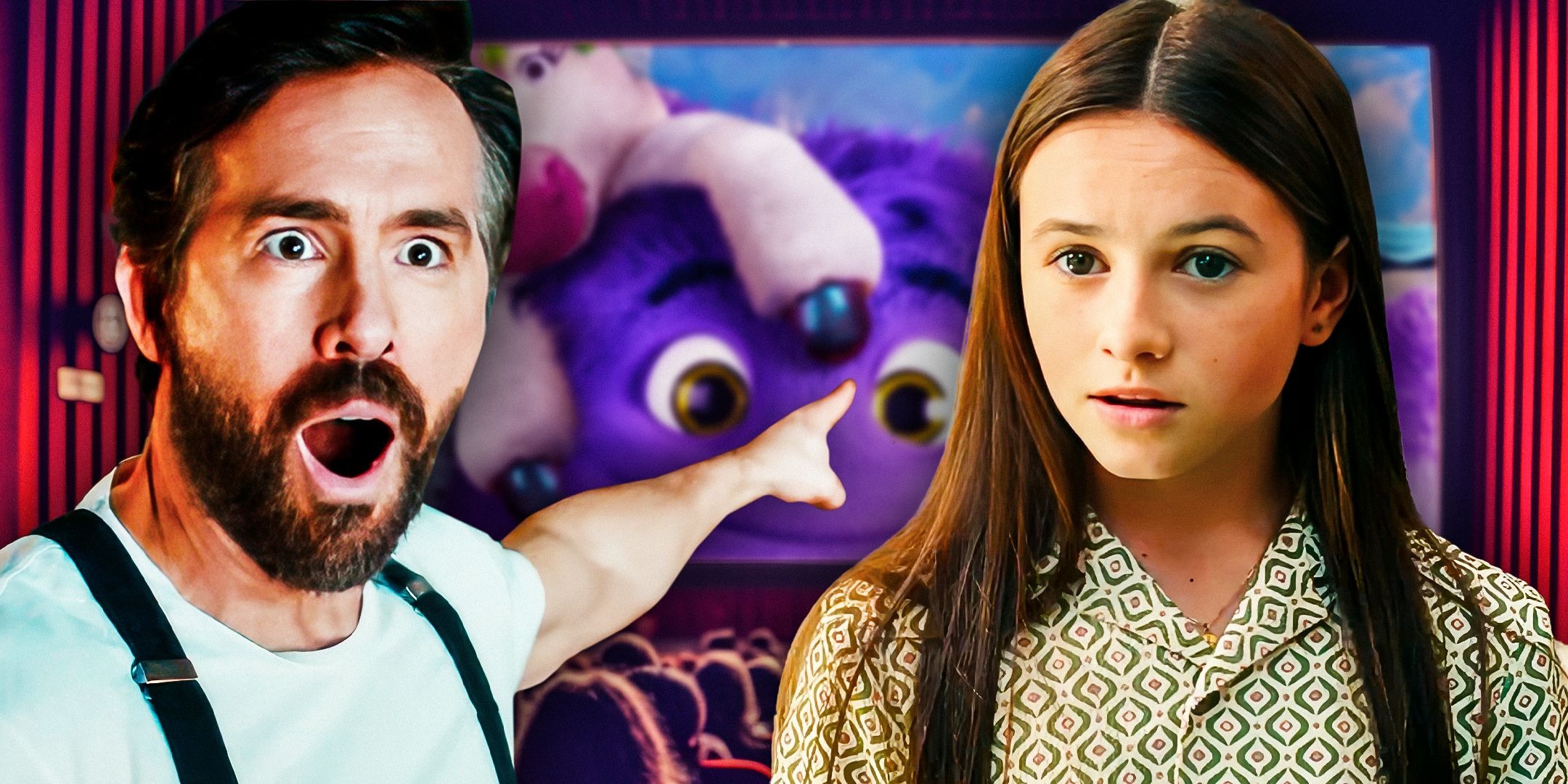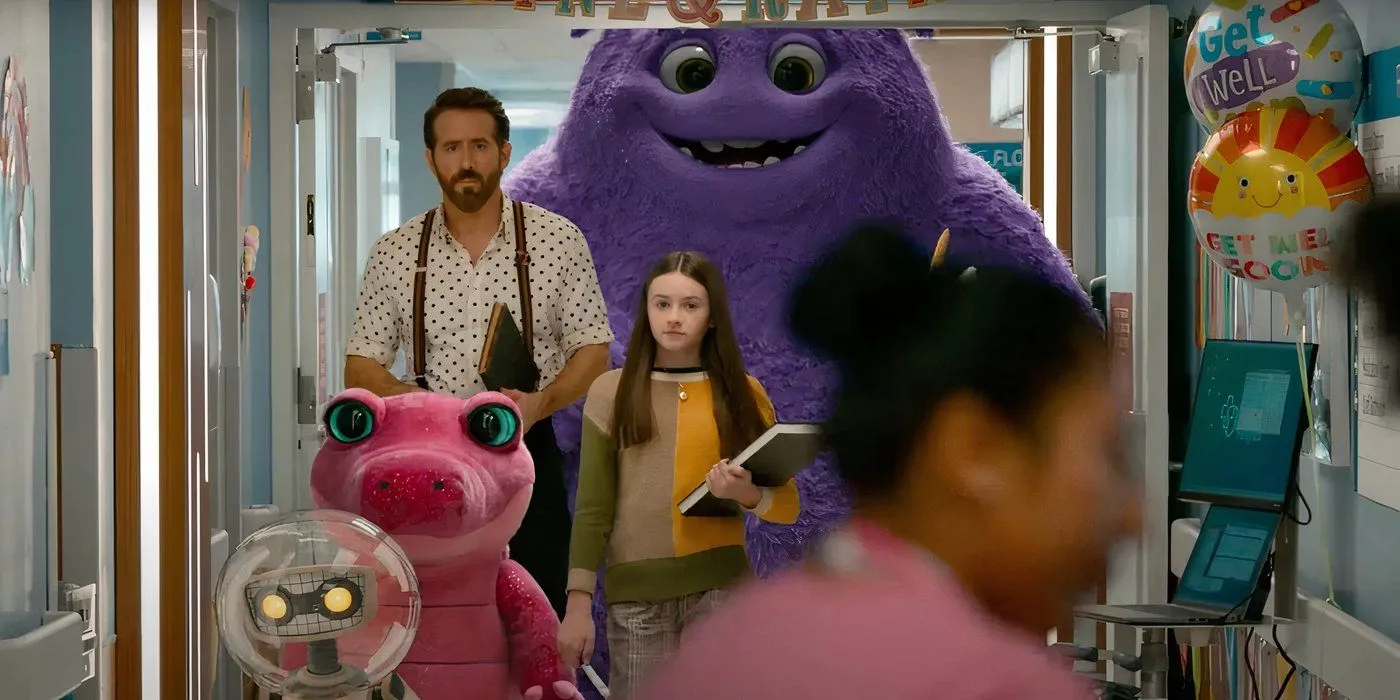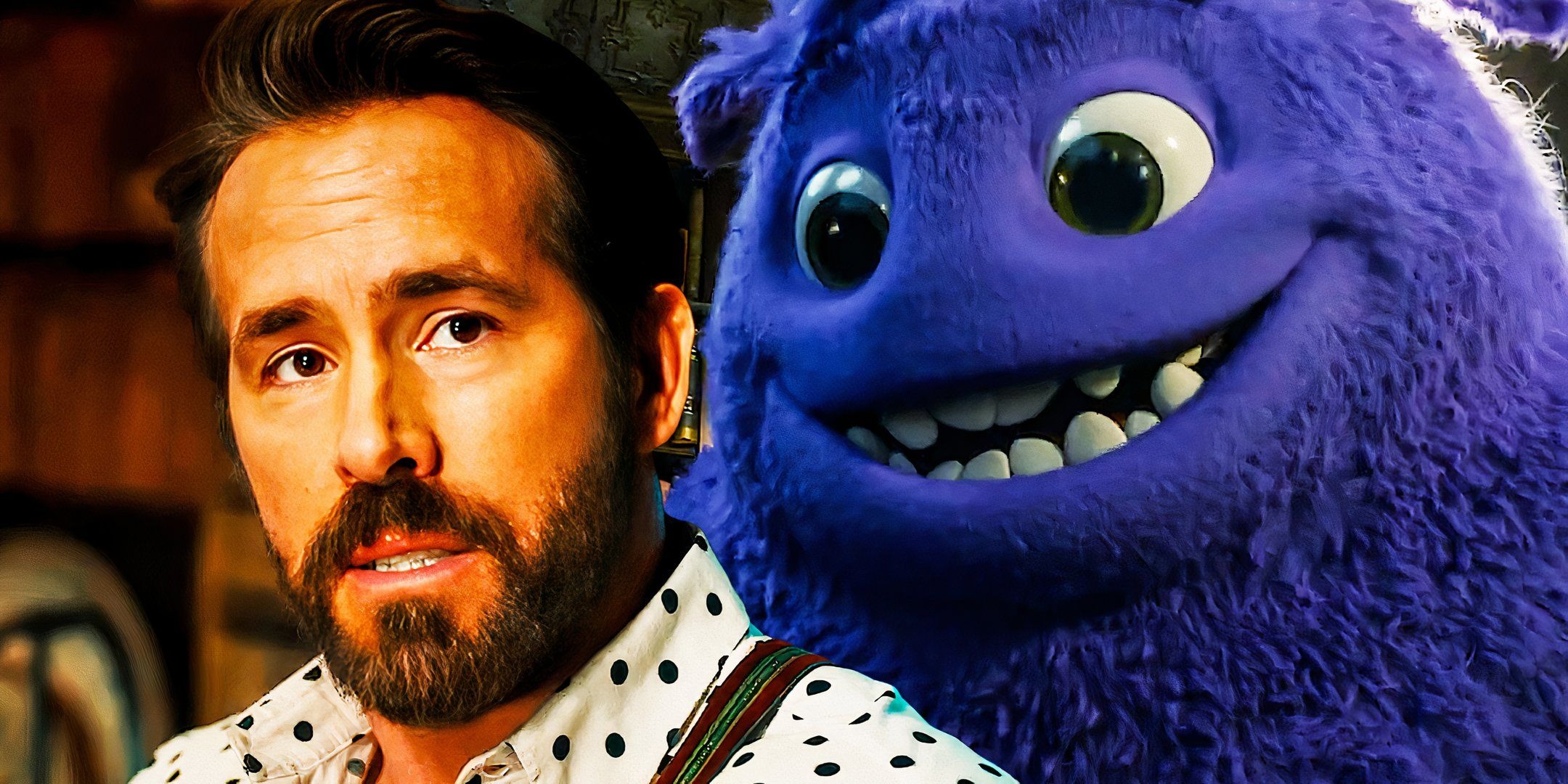By the time IF concludes, Bea and Cal share a heartwarming farewell before she departs New York City with her father. Throughout most of the film, Bea’s father is hospitalized for surgery. After a tense moment near the end, the surgery proves successful.
As Bea and her father prepare to leave, Bea discovers a childhood drawing of herself, her parents, and her imaginary friend, Calvin, who has been Cal all along, played by Ryan Reynolds. This revelation helps Bea understand her deep connection with Cal, and she rushes back upstairs.

Her memories sparked, allowing her to see him again. Now dressed in more vibrant, clown-like attire, Cal greets Bea with a balloon flower. They embrace, closing the film on an emotional note. This scene captures the intent of the movie’s themes and offers clarity on many of Cal’s actions.
Will Bea Ever See Calvin Again?
The film’s ending might suggest that Bea and Cal are parting ways, but the central themes suggest they could reunite. A core message of IF is that imaginary friends remain important, even as one grows older. In difficult times, they can offer comfort, even if they aren’t physically present.
Bea needs support in the future, and Calvin may reappear. Additionally, since Bea’s grandmother lives in New York, future visits could bring her to Calvin’s apartment. This possibility is further supported by the fact that Cal is revealed to be an IF, explaining why no one else could see him.
At the close of the film, both Bea and Cal appear rejuvenated emotionally, which sets the stage for a reunion later on. Bea’s father also seems open to the idea of imaginary friends, as it’s revealed that Keith, his invisible friend, has been with him all along.
What Happens To The IFs After Bea Leaves New York?
Though the other IFs don’t leave with Bea, it’s clear that her time with them has had a positive impact. The ending montage shows some IFs reuniting with their original humans. For instance, Bea’s grandmother remembers Blossom, and other minor characters reconnect with their IFs, like Unicorn and Ally.
Although not every IF finds their original person, the film suggests that the retired IFs will return to their old homes instead of being placed with new children. Benjamin, who could not see other IFs, is shown to have his dragon IF.
The closing moments of IF suggest that reunions between the IFs and their original humans bring peace, as seen when Blue helps Jeremy regain his confidence.
How IF’s Ending Theme Changes The Beginning Of The Movie
The conclusion of IF offers a surprising change in focus from its beginning. When Bea first meets Calvin and Blue, the latter is trying to forge a connection with a new child. The concept of placing IFs in new homes initially seems fitting, especially after the elderly teddy bear, Lewis, creates a retirement community for them.
However, the film eventually tends towards emphasizing the importance of maintaining imaginative joy even in adulthood. This theme aligns with Bea’s father’s wishes for her, and her experiences with the IFs confirm this. Both Bea and the adults find happiness in reuniting with their IFs.
The film’s true message is that imagination and joy don’t need to be forgotten or discarded; children like Bea and Benjamin can rediscover their IFs. This subverts the expectation of finding new homes for the IFs, suggesting instead that they already have a place.
How IF’s Ending Sets Up A Sequel
The film’s conclusion leaves room for a potential sequel, despite wrapping up the emotional arcs of Bea, Calvin, and the other IFs. Bea could return to New York City to visit her grandmother, creating an opportunity to reconnect with Calvin and the other IFs who remain in the retirement home.

There are also unresolved questions regarding aging IFs and whether they can truly be forgotten. Blue’s fear of disappearing if forgotten raises an important issue about the potential mortality of IFs. Although Calvin rejects the idea of IFs fading away, the question of their aging is intriguing and could be explored in a sequel.
Bea’s continued growth, possibly leading into high school, offers another avenue to further look into IF’s message of holding onto one’s imagination. Such a sequel could assess how Bea continues to help the IFs as she matures.
The Real Meaning Of IF’s Ending
The film ends on a powerful note, celebrating the importance of imagination and positivity, especially in challenging times. Bea initially sets aside her childish imagination due to the death of her mother and her father’s declining health.
However, through Calvin and the other IFs, Bea rediscovers the value of imagination. The film’s true meaning becomes clear when Bea’s grandmother and Blossom reunite, as well as when Blue helps Jeremy regain his self-confidence.
The central message is that people should never completely abandon their childhood imagination. Even as adults, we may need the comfort and reassurance that imaginary friends provide. IF reminds us that imagination is a vital part of human connection.
How The IF Ending Was Received
The film’s ending drew a mixed response, which reflects the broader reception of the movie. John Krasinski envisioned IF as a live-action Pixar-style movie, and this tone resonates throughout the film. Some audiences found this approach effective, with many claiming they were moved to tears by the finale.
However, not everyone shared this sentiment. Some critics felt that Krasinski’s attempt to blend fun with emotional depth, similar to Pixar’s style, fell short. A review from Clint Worthington on RoberEbert.com praised the movie’s premise but felt the ending relied too much on tired, predictable scenes.
He pointed out that while the film had memorable moments, the final emotional beats were bogged down by overused tropes and cloying sentiments.



